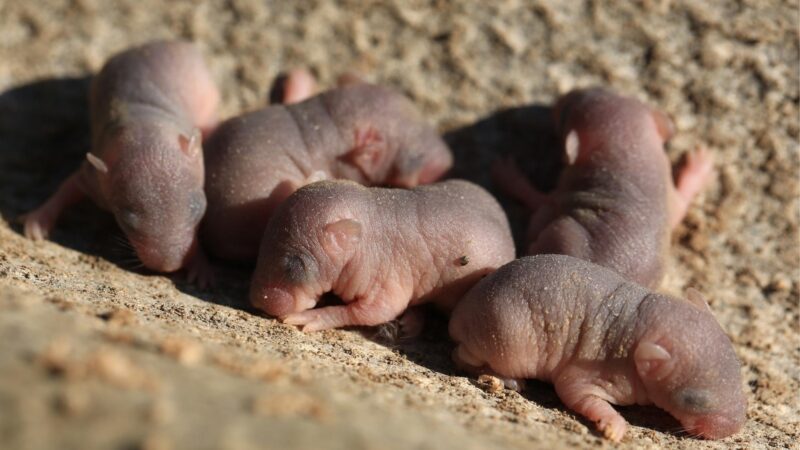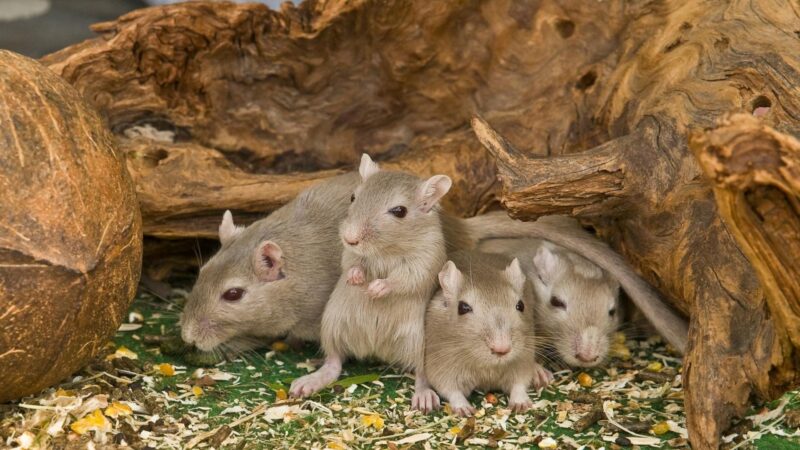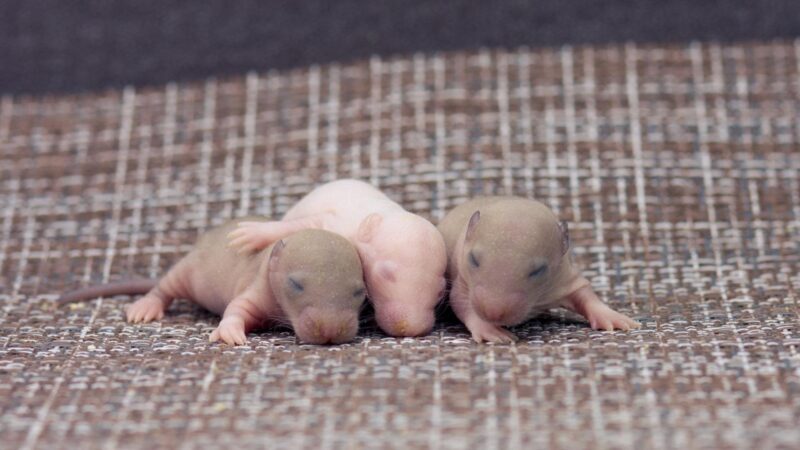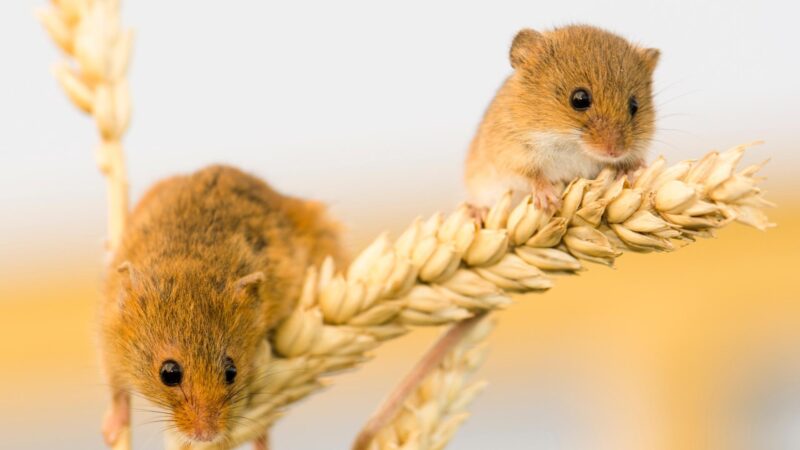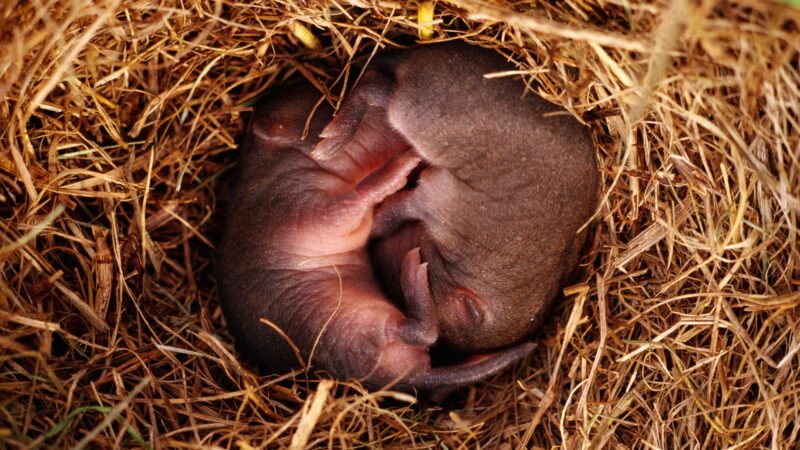Finding baby mice in your home is unnerving — and it usually signals more than one wandering youngster. A neonate (a mammal 10 days old or younger) is tiny, vulnerable, and often called a pup. Yes, they look fragile and harmless, but a nest of pups usually means at least one adult mouse is nearby, and that raises the risk of a broader infestation and property or health impacts.
It’s understandable to feel protective or conflicted about what to do. Killing pups outright is both inhumane and often ineffective as a long‑term solution, but leaving a nest unchecked can allow a population to grow. Rather than trying to “force” a mother out by handling animals directly, take humane exclusion steps to encourage adults to leave and keep others out — and call a licensed pest or wildlife professional if the situation looks large, dangerous, or you are unsure how to proceed safely.
Some species can carry zoonotic diseases, including hantavirus in certain regions, so take precautions when you encounter nests, droppings, or live animals. This article explains how to identify baby mice, what they eat and when they develop, safe handling and cleanup practices, and when to call a pro. There are practical, humane choices that reduce risk and stop reproduction at the source.
What Do Baby Mice Look Like?
Newborn mouse pups are tiny, hairless, and born with their eyes closed. Their skin often appears pink or reddish and may show pale patches. Over the first days their bodies change fast: ears unfurl, fur appears, and features that distinguish males from females (like nipples in females) start to show. They go from helpless and immobile to increasingly active in about a week to ten days.
Size and growth at a glance
Newborn pups may be roughly the size of a small coin and weigh only about a gram. Adult body length for common house mice varies by species and can include a tail that makes overall length significantly longer.
Quick development timeline
Here’s a short, age‑based summary to help you place what you see:
-
0–4 days: Hairless, eyes closed, pink skin; ears develop in the first few days.
-
5–9 days: Fur starts appearing; ears fully formed; white patches may fade.
-
10–12 days: Fur more complete; eyes begin to open around day 11; by day 12 pups can see reasonably well and start showing interest in solid food.
-
15–21 days: Increasingly active, nibbling solid food; weaning typically completes by about 21 days.
-
3–7 weeks: Rapid growth toward independence and sexual maturity varies by sex and species.
That rough timeline helps you judge whether pups you find are newborns needing immediate care, or older young that will soon leave the nest with their mother.
What Do Baby Mice Sound Like?
Pups call to their mother with high‑pitched squeaks when they are cold, hungry, or separated from the nest. The sounds are part of normal communication: a pup’s squawk can prompt retrieval or nursing. If you hear persistent calling behind walls or in hidden spaces, a nest is likely nearby.
When Do Mice Have Babies and Where Are Nests Found?
Mice can breed year‑round in many environments. Females have a short gestation (about 19–21 days) and may become pregnant again shortly after giving birth, so populations can expand quickly under favorable conditions.
Where to look
Indoors, nests are usually in hidden, warm, quiet spots close to food: attics, basements, inside wall voids, behind appliances, or under cabinets. Outdoors, nests are placed in sheltered locations where predators and weather are less likely to disturb them. If there’s a nest in your house, you will often find it near a food source and some collected nesting material.
Litter size and independence
Typical house mouse litters range from about 4 to 12 pups, with averages around five. Given repeated breeding cycles, a single female can produce many offspring in a year. Young are generally weaned at around three weeks and become independent in the weeks that follow.
How Long Can Baby Mice Live Without Their Mother?
Survival without a mother depends strongly on the pup’s age and species. Truly newborn pups — those still fully dependent on milk and unable to thermoregulate — generally have a very small window without maternal care. Older pups (approaching weaning at about three weeks) have much better odds. Statements like “2–4 days” can be true for the very youngest, but it’s not a universal rule; results vary by circumstance and there isn’t a single exact figure that applies to every case.
What Do Baby Mice Eat?
Newborn pups rely entirely on their mother’s milk. As their eyes open and teeth emerge they begin sampling solids. A few practical points for reference:
-
Newborn–~2 weeks: milk only; they cannot digest solids properly and need frequent, warm feedings.
-
~2–3 weeks: start nibbling soft solids while still nursing; interest in solid food increases after eyes open.
-
3 weeks+: usually eating solids and weaned by about 21 days.
If you find an orphan and are considering care, remember age matters enormously. Imagine a newborn: it needs formula and specialized, frequent feeding and warmth, tasks best handled by wildlife rehabilitators or veterinarians. Older pups might be stabilized more easily, but professional guidance is still recommended.
- NURTURE YOUR SPIRIT: Add a few drops of our peppermint oil in...
- IDEAL FOR RELIEVING NECK TENSION: To help relieve head and neck...
- VERSATILE USE: Use in aromatherapy, massage, DIY beauty products,...
- 100% PURE & ORGANIC: Our premium GMO-FREE Peppermint oil is steam...
- BLENDS WELL WITH OTHER ESSENTIAL OILS: Such as Eucalyptus,...
Do Mice Eat Their Young?
Occasionally, adult mice will eat pups; reasons can include stress, insufficient food, nest disturbance, or first‑time mothers who discard nonviable young. That behavior is part of mouse biology under stressful or marginal conditions rather than a common household occurrence.
Read more about the behavior here: cannibalism.
What Do Baby Mice Feces Look Like?
Very young pups that are exclusively nursing produce very little visible fecal matter, and the mother often manages waste in the nest. Once pups begin eating solids the droppings become more like adult mouse droppings but smaller in size. Mouse droppings are typically dark, pellet‑shaped, about 1/8 to 1/2 inch (3.2 to 12.7 mm) long, with tapered ends; juvenile pellets are at the lower end of that range.
Should You Kill Baby Mice?
Intentionally killing pups is not recommended as a humane or effective strategy. Removing the adults and securing the home to prevent reentry stops reproduction more reliably. If you encounter orphaned pups, contact a licensed wildlife rehabilitator or veterinarian rather than attempting lethal measures.
How to Get Rid of Baby Mice Humanely and Safely
Your goal should be to stop reproduction, exclude adults, and handle any contaminated areas safely. Below are humane, practical steps that avoid promotional product boxes; the tips are simple and focused on safety and prevention.
-
Do not handle pups directly with bare hands. Use gloves and minimize disturbance to the nest.
-
Make it easier for the mother to leave voluntarily: open a route to the outdoors (a garage or door to the yard) rather than trying to corral animals by hand. Seal those exits again after the adults leave.
-
Use live, humane traps for adult mice if you choose to capture them. Bait with peanut butter or pet food and check traps frequently; release only according to local regulations and best practice guidance from wildlife authorities.
-
Seal entry points to prevent more adults from moving in: close gaps around pipes, vents, and foundations; use steel wool or metal flashing for small holes and weatherproof caulk for larger gaps.
-
Keep food sealed in rodent‑proof containers and reduce clutter where mice can nest.
Note: Some online product showcases may appear as examples in other articles. Here we emphasize non‑branded, practical actions and urge contacting local pest or wildlife professionals for humane removal and relocation advice specific to your jurisdiction.
Safety checklist for handling nests, droppings, or contaminated areas
Follow this stepwise protocol to reduce disease risk and clean up safely:
-
Wear disposable gloves and a mask (N95 if available); avoid direct skin contact.
-
Ventilate the area for 30 minutes before starting cleanup by opening windows and doors if possible.
-
Do not sweep or vacuum droppings or nests dry — that can aerosolize particles.
-
Spray affected area thoroughly with an appropriate household disinfectant or a solution of 1 part bleach to 10 parts water; let it soak for 5–10 minutes.
-
Use paper towels to pick up droppings, nesting material, and dead rodents; place waste in a sealed plastic bag and dispose according to local regulations.
-
Remove gloves and discard them in a second sealed bag; wash hands thoroughly with soap and water for at least 20 seconds.
If you suspect exposure to hantavirus or other serious illness (for example, you develop fever, muscle aches, or respiratory symptoms after cleaning or handling rodents), seek medical attention and tell the provider about the potential exposure.
When to Call a Professional
Some situations are best left to licensed pest control or wildlife rehabilitators. Consider calling a professional if:
-
You find multiple nests or evidence of a large infestation (lots of droppings, chewed wiring, damaged insulation).
-
You are unsure of the species (deer mice and some wild rodents pose higher hantavirus risk) or suspect wildlife regulations apply.
-
There are very young orphaned pups and you don’t have immediate access to a rehabilitator or vet.
-
There has been direct contact with rodent urine, feces, or nesting in living spaces used by people with immune compromise.
Professionals can perform humane exclusion, estimate infestation size, and coordinate safe cleanup. They also know local rules about relocating wildlife.
Related: Mice Control: How To Get Rid of Mice?
Pups themselves may not cause direct damage right away, but a nest inside your home tells you adults are reproducing nearby. That matters because mice grow quickly and can squeeze through tiny openings, chew wiring, contaminate food, and spread disease. After addressing an immediate nest, take concrete exclusion steps so new mice can’t take up residence again.
Quick prevention checklist
Simple exclusion and housekeeping cuts the odds of reinfestation:
-
Seal gaps around pipes, vents, and foundation with metal mesh or flashing.
-
Store pantry items in sealed glass or thick plastic containers.
-
Declutter attics, garages, and basements where mice can nest undisturbed.
-
Repair holes in screens and weatherstripping around doors and windows.
Seal the house, remove easy food and bedding sources, and follow up with humane trapping or a professional assessment if signs persist.
- 100% Humane & Ethical - Remove stubborn mice without hurting them...
- Safe for Kids, Dogs, & Cats - Keep your children, dog, cat, and...
- Easy & Reusable - These self locking plastic no kill mouse traps...
- Versatile Trap - This safe mouse trap humane can also be a tunnel...
- Mice-Proof Home - Stop killing and start catching with our garage...
List of Sources
Timm, R. M. (2011). House Mouse. Agriculture and Natural Resources, University of California.
Potter, M. F. (1994). Control of Mice. University of Kentucky.
Lane-Petter, W. (1968). Cannibalism in rats and mice. Proceedings of the Royal Society of Medicine.
Mouse Pup Appearance by Age. University of California.
- How to Get Rid of Copperheads | Practical Guide - August 27, 2023
- How to Get Rid of Corn Snakes | What Makes Them Aggressive? - August 27, 2023
- How to Get Rid of Alligators | Safety Measures and Removal Methods - July 16, 2023


